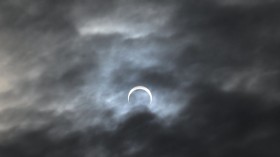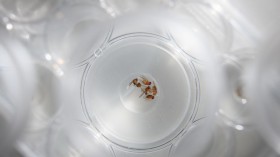Increasingly harsh drought conditions in the US Midwest's "Corn Belt" may take a serious toll on corn and soybean yields over the next half-century, according to research published today in the journal Science.
Corn yields could drop by 15 to 30 percent, according to the paper's estimates, which could be devastating to a nation in which corn and soybeans account for approximately 40 and 35 percent of global production, respectively. "Yield increases are getting smaller in bad conditions," co-author Roderick Rejesus commented in a news release. "Agronomic and genetic crop improvements over the years help a lot when growing conditions are good, but have little effect when growing conditions are poor, like during droughts."
A team from North Carolina State University conducted an 18-year long study and measured the vapor pressure deficit (VPD) - including temperature and humidity measures - on corn and soybean yields. The best VPD condition is at a "Goldilocks" range - extremes at either end mean extreme drought or too much water, but the middle of the spectrum is just right.
But some 29 climate estimates modeled in the paper suggest that VPD will rise significantly over the next 40 years, bringing on more severe drought conditions.
But drought is not just detrimental to plants alone - animals suffer too. California's currently experiencing a drought that is imperiling tricolored blackbirds, large trees and native fish, with some of the affected species already on the state's endangered list and some heading in that direction, according to The Tribune.
Eighty percent of those species face extinction by the year 2100 if present trends continue, commented Peter Moyle, a professor at the UC Davis Center for Watershed Sciences.
The Corn Belt states included in this study were Iowa, Illinois and Indiana, as well as South Dakota, Nebraska and Kansas.
There may be some hope yet for these corn-producing regions. Research shows that crops planted too close together may be more susceptible to drought, and drought-resistant seeds or other ways of combating sensitivity to drought may be effective.
Another recent study published in the Journal of the American Water Resources Association claims that the drought we are currently experiencing is nothing in comparison to what it was like over a century ago. The 1930s Dust Bowl, which we consider the worst US drought in history, is not even the tip of the iceberg. Researchers in this study - and the plants and animals - may disagree.
© 2024 NatureWorldNews.com All rights reserved. Do not reproduce without permission.





